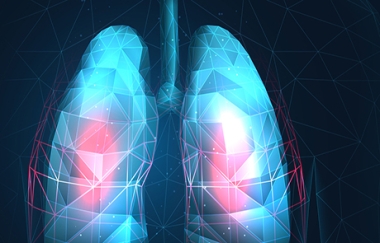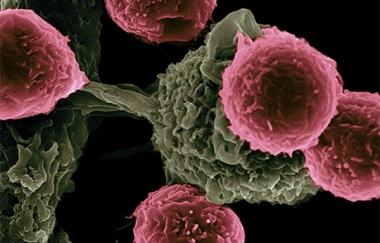במאמר תגובה זה מנתח ד”ר איאן פירון את המחקר עליו דיווחנו לאחרונה : אדי סיגריות אלקטרוניות עלולים לפגוע בפינוי הריר בדרכי האוויר (AJRCCM) תוך שהוא מבקר את הליקויים במבנה ושיטות המחקר ומציע לקרוא את המסקנות בזהירות רבה.
פירון סבור שאל מול העדויות הברורות לפיהן מעבר מעישון סיגריות בעירות לסיגריות אלקטרוניות או מכשירים לחימום טבק עשוי להפחית באופן ניכר את הנזקים הבריאותיים העצומים של העישון , פירסום מחקרים עם ליקויים , כמו מחקר זה, עלול לפגוע במאמץ להפחתת נזקי העישון, ובמיוחד עבור אנשים שאינם מצליחים להיגמל באופן עצמאי או באמצעות טיפולים תרופתיים ואחרים.
I write to comment on a recent publication by Chung et al1, who examined the impact of e‑cigarette vapour in both in vitro and animal models of the lung. The authors concluded from their work that that inhalation of e-cig vapor causes airway mucociliary dysfunction in vitro and in vivo, potentially alerting those who read the paper to respiratory effects of e-cigarette use. However, given some major flaws in both their experimental design and their reporting of the data, their interpretations and conclusions are misleading and should be taken with a large amount of caution. Cigarette smoking is an addictive habit which kills half the people who smoke. Furthermore, those who are fortunate enough not to die young may however suffer from an illness caused by their cigarette smoking. We have known for over 4 decades, since the pioneering work of Professor Michael Russel, that smoking-related death and disease is due to the inhalation of toxic chemicals produced when the leaves of the tobacco plant are combusted, and not from exposure to nicotine itself2. This fundamental piece of knowledge underpins the principle of tobacco harm reduction, which aims to make products available to smokers which allow them to obtain nicotine without the other deadly chemicals found in cigarette smoke.
However, the paper by Chung et al did not take this into account. E-cigarettes are thought by many to be a product which typifies tobacco harm reduction, by providing smokers with nicotine but not the deadly toxins. In most cases, they are used, and recommended for use, by already-addicted smokers as a way of helping them to quit smoking. Because of this any study, of any kind, examining the impact of e-cigarette use on health must employ the relevant controls. In a study such as that published by Chung et al, any effects of e-cigarette vapour exposure must be put into context by comparing those effects with those observed when either cells or animals are exposed to cigarette smoke.
E-cigarette use is likely not completely risk-free; but it is likely to be vastly less harmful than cigarette smoking. Examining the impact of e-cigarette vapour and not comparing the impact with that of cigarette smoke is a meaningless and misleading exercise. The other major flaw in the publication is not in the experimental design but in the reporting of the study. In any research paper, the details provided on the experimental approach must be detailed enough to allow others to repeat the work and reproduce the findings.
However, in this paper only brief details were given on the type of e-cigarette device used, and this did not include the power settings used to aerosolize nicotine or the resistance of the heating coil. We know that device power and coil resistance, as well as many other factors, influence the production of toxicants by e-cigarettes3. Without knowing the full details of the present study, we are unable to tell whether this was causative of the responses seen by Chung et al. Furthermore, the paper merely states that the way that the e-cigarette was puffed was modified from ISO standards for cigarette smoking machines.
Likely, this puffing method does not relate in any way to how e-cigarette users use their devices. We have seen in the past that e-cigarettes, when used under conditions that do not approximate to normal human use, can produce harmful toxins 4,5. Again, this could have led to the responses reported in this paper, but without full experimental details we cannot tell.
E-cigarettes have the potential to save the lives of hundreds of millions of smokers around the world, by allowing smokers to switch to an alternative form of nicotine delivery free from harmful chemicals. Many leading global health authorities, such as Public Health England 6, have embraced this potential and recommend switching.
And for smokers considering making that potentially lifesaving switch who remain yet unconvinced to do so, we must provide them with accurate information not on the absolute risk of e-cigarette use, but of the relative risk compared to cigarette smoking.
Sir Joseph Rotblat, the Nobel Laureate physicist, once said At a time when science plays such a powerful role in the life of society, when the destiny of the whole of mankind may hinge on the results of scientific research, it is incumbent on all scientists to be fully conscious of that role, and conduct themselves accordingly.
Those performing studies on e-cigarette could take this telling message into account when planning, executing and reporting their studies.
Dr. Ian M. Fearon Independent Scientific Consultant
Disclosure: whatIF? Consulting Limited provides clinical study, regulatory affairs and general scientific consultancy to manufacturers of nicotine and tobacco products. The views expressed in this letter are those of Dr. Ian M. Fearon. No other party has contributed to this letter or reviewed its contents.
1. Chung S, Baumlin N, Dennis JS, Moore R, Salathe SF, Whitney PL, Sabater J, Abraham WM, Kim MD, Salathe M. Electronic Cigarette Vapor with Nicotine Causes Airway Mucociliary Dysfunction Preferentially via TRPA1 Receptors. Am J Respir Crit Care Med. 2019. 2. Russell MA. Low-tar medium-nicotine cigarettes: a new approach to safer smoking. Br Med J.1976;1:1430-1433. 3. http://nationalacademies.org/hmd/Reports/2018/public-health-consequences-of-e-cigarettes.aspx 4. Jensen RP, Luo W, Pankow JF, Strongin RM, Peyton DH. Hidden formaldehyde in e‑cigarette aerosols. N Engl J Med. 2015;372(4):392-394.
5. Farsalinos KE, Voudris V, Spyrou A, Poulas K. E-cigarettes emit very high formaldehyde levels only in conditions that are aversive to users: A replication study under verified realistic use conditions. Food Chem Toxicol. 2017;109(Pt 1):90-94.
6. Evidence review of e-cigarettes and heated tobacco products 2018



















השאירו תגובה
רוצה להצטרף לדיון?תרגישו חופשי לתרום!